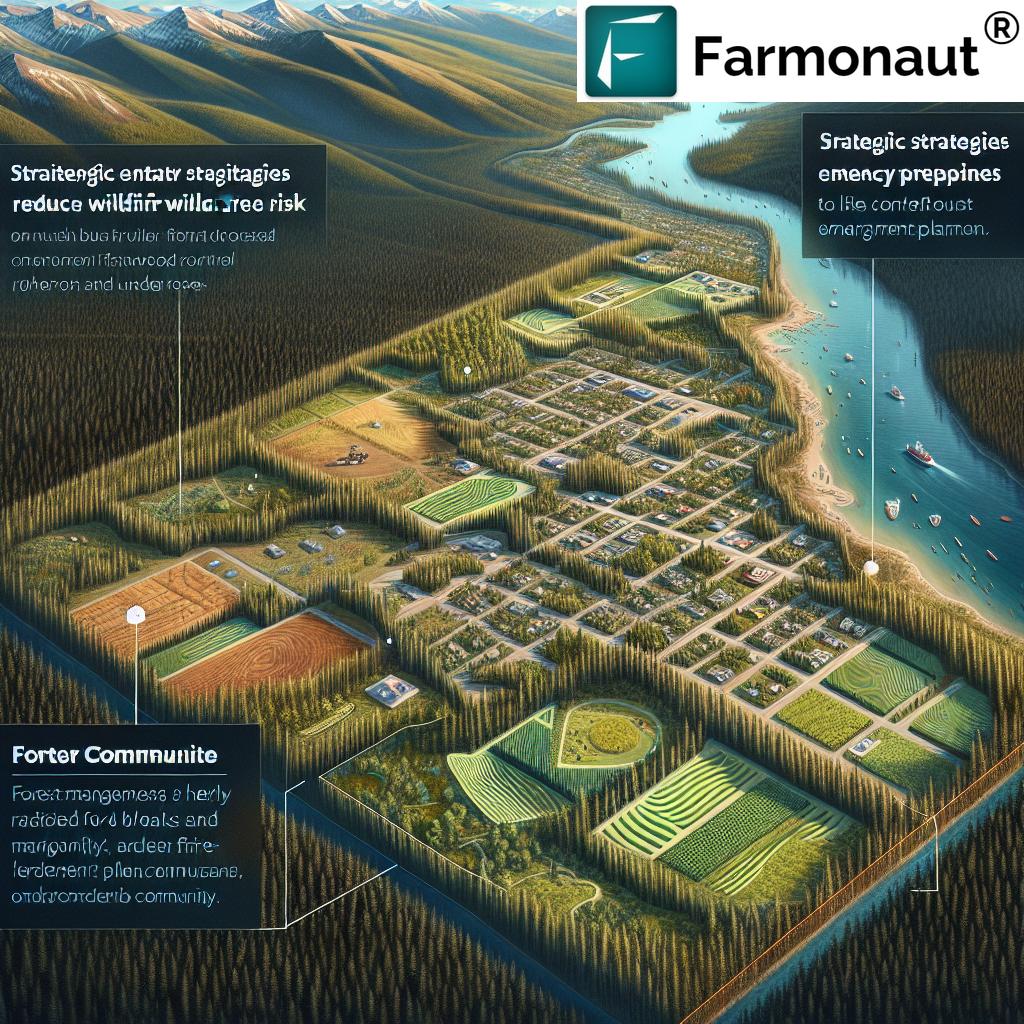Unlocking Saskatchewan’s Mineral Potential: Critical Nickel-Copper Exploration and Investment Opportunities
“Saskatchewan’s nickel-copper exploration project secured upsized financing, reflecting growing interest in the Trans Hudson Corridor’s mineral potential.”
In the heart of Canada’s prairie province, Saskatchewan, an exciting chapter in mineral exploration is unfolding. We are witnessing a surge of interest and investment in critical mineral exploration, particularly focusing on nickel and copper deposits. This development is not just a local phenomenon but has far-reaching implications for the global electric vehicle market and North America’s critical minerals supply chain.
At the forefront of this mineral renaissance is Fathom Nickel Inc., a company that has recently made headlines with its strategic financing moves and ambitious exploration plans. Let’s delve into the details of this unfolding story and explore what it means for Saskatchewan’s mineral future, investors, and the broader mining industry.
The Strategic Investment: A Vote of Confidence
On April 10, 2025, Fathom Nickel Inc. (CSE: FNI) (FSE: 6Q5) (OTCQB: FNICF) announced a significant upsizing of its previously declared non-brokered private placement financing. The initial target of C$705,000 has been increased to an impressive C$1,500,000, signaling strong investor confidence in the company’s projects and potential.
This upsized offering consists of units priced at $0.03 each, with each unit comprising one common share and one transferable Common Share purchase warrant. The warrants are exercisable for 36 months at $0.05 per share, providing investors with an attractive opportunity for future growth.

A key player in this financing round is Crescat Capital LLC, which has agreed to make a strategic investment of up to 33% of the upsized offering. This move by Crescat Capital, a renowned global macro asset management firm, underscores the growing interest in Saskatchewan’s mineral potential among sophisticated investors.
Expert Insights: The Geological Perspective
Quinton Hennigh, Crescat’s Geologic & Technical Advisor, provided valuable insights into the geological significance of Fathom’s exploration efforts. He stated, “Fathom is on an elephant hunt at Gochager Lake. Early drilling has already discovered significant magmatic nickel-copper-cobalt sulfide mineralization.”
This statement highlights the potential for substantial mineral deposits in the area. The reference to “elephant hunt” in geological terms suggests the pursuit of large, economically significant mineral deposits, which are often referred to as “elephants” in the industry.
The Gochager Lake Project: A Promising Frontier
The focal point of Fathom’s exploration efforts is the Gochager Lake Project. This project has already shown promising results, with early drilling revealing significant magmatic nickel-copper-cobalt sulfide mineralization. The presence of these minerals in a magmatic sulfide deposit is particularly exciting for several reasons:
- High-Grade Potential: Magmatic sulfide deposits often yield high-grade ores, which can be more economically viable to extract.
- Critical Minerals: Nickel, copper, and cobalt are all considered critical minerals, essential for various high-tech and green energy applications.
- Geological Continuity: These types of deposits often exhibit good continuity, which can lead to substantial resource estimates.
Exploration Techniques: Cutting-Edge Approaches
“The expanded funding will support extensive field programs, including geochemical soil anomaly investigations and TDEM surveys for mineral exploration.”
With the increased funding, Fathom plans to implement a comprehensive exploration program utilizing state-of-the-art techniques:
- Geochemical Soil Anomaly Investigations: This method involves analyzing soil samples to detect trace amounts of minerals that may indicate the presence of larger deposits below the surface.
- TDEM (Time-Domain Electromagnetic) Surveys: These advanced geophysical surveys can detect conductive bodies underground, which are often associated with sulfide mineralization.
- Field Mapping: Traditional geological mapping will complement the high-tech approaches, providing crucial context to the data collected.
The combination of these techniques is expected to refine drill targets and further assess the project’s resource potential. This multi-faceted approach demonstrates Fathom’s commitment to thorough and efficient exploration practices.
The Trans Hudson Corridor: A Geological Treasure Trove
The Gochager Lake Project is situated within the Trans Hudson Corridor, a geological formation that has garnered increasing attention from the mining industry. This ancient orogenic belt, formed over 1.8 billion years ago, is known for its rich mineral endowment.
Key features of the Trans Hudson Corridor include:
- Diverse mineral potential, including base metals, precious metals, and rare earth elements
- Underexplored areas with significant discovery potential
- Favorable geological structures for hosting large mineral deposits
The renewed interest in this geological region underscores its importance in the context of global mineral exploration and the search for new sources of critical minerals.
Historical Context: The Gochager Lake Deposit
To fully appreciate the potential of the current exploration efforts, it’s important to consider the historical context of the Gochager Lake deposit. According to the Saskatchewan Mineral Deposit Index (SMDI #0880), the area hosts a historic, non-NI 43-101 compliant open pit resource consisting of 4.3 million tons at 0.295% Ni and 0.081% Cu.
While these historical estimates cannot be relied upon without verification, they provide valuable insight into the area’s mineral potential. The presence of a significant historical resource suggests that the region has the geological characteristics necessary to host substantial nickel and copper mineralization.
Implications for Saskatchewan’s Mining Industry
The developments at Gochager Lake and the broader interest in Saskatchewan’s mineral potential have significant implications for the province’s mining industry:
- Economic Boost: Successful mineral exploration and potential mine development could bring substantial economic benefits to the region, including job creation and increased tax revenues.
- Technological Advancements: The focus on critical minerals aligns with the growing demand for materials essential to green technologies, positioning Saskatchewan as a potential key player in the global transition to sustainable energy.
- Investment Attraction: Positive exploration results and strategic investments like those from Crescat Capital could attract further international investment to Saskatchewan’s mining sector.
These developments also highlight the importance of sustainable and responsible mining practices. As exploration activities progress, it will be crucial for companies like Fathom to maintain high environmental standards and engage positively with local communities.

The Global Context: Critical Minerals and Electric Vehicles
The exploration for nickel and copper in Saskatchewan is not occurring in isolation. It’s part of a global trend driven by the increasing demand for critical minerals, particularly in the context of the electric vehicle (EV) revolution.
Nickel and copper are essential components in EV batteries and electrical systems:
- Nickel: A key component in lithium-ion batteries, improving energy density and extending range.
- Copper: Used extensively in EV motors, wiring, and charging infrastructure.
As the world transitions towards electric mobility, securing reliable and sustainable sources of these minerals becomes increasingly crucial. Saskatchewan’s exploration projects could play a vital role in meeting this growing global demand.
Investment Landscape: Opportunities and Considerations
For investors, the developments in Saskatchewan’s mineral exploration sector present both opportunities and considerations:
- Early-Stage Potential: Investing in exploration companies like Fathom offers the potential for significant returns if major discoveries are made.
- Critical Mineral Focus: The focus on nickel and copper aligns with long-term trends in the green energy and EV sectors.
- Risk Factors: Mineral exploration is inherently risky, with no guarantee of success. Investors should carefully consider their risk tolerance.
- Regulatory Environment: Saskatchewan’s mining-friendly policies and stable political environment are favorable factors for investment.
As with any investment in the resource sector, thorough due diligence and an understanding of the geological, technical, and market factors are essential.
Exploration Timeline and Milestones
Understanding the exploration timeline is crucial for investors and industry observers. Based on the information provided by Fathom Nickel, here’s an overview of the planned activities:
- Early June 2025: Commencement of field mapping, soil geochemistry, and geophysical work.
- Summer 2025: Continuation of extensive field exploration programs.
- Fall 2025: Planned drill program, targeting areas identified through earlier exploration work.
These milestones will be critical in assessing the project’s potential and could serve as catalysts for investor interest and potential share price movements.
Technological Advancements in Mineral Exploration
The exploration efforts at Gochager Lake showcase the cutting-edge technologies being employed in modern mineral exploration. These advancements are crucial in improving the efficiency and success rate of exploration programs:
- Advanced Geophysical Techniques: TDEM surveys represent just one of many sophisticated geophysical methods used to detect mineral deposits at depth.
- Data Analytics and AI: Large datasets generated from exploration activities are increasingly analyzed using artificial intelligence and machine learning algorithms to identify patterns and potential targets.
- Drone Technology: Unmanned aerial vehicles (UAVs) are often used for detailed mapping and sampling in remote or difficult-to-access areas.
- Environmentally Friendly Practices: Modern exploration techniques aim to minimize environmental impact, aligning with sustainability goals.
These technological advancements not only improve the chances of discovery but also contribute to more sustainable and efficient exploration practices.
Saskatchewan’s Mining Infrastructure and Support
Saskatchewan’s long history in the mining sector, particularly in potash and uranium, has resulted in a well-developed infrastructure and support system for mineral exploration and mining activities:
- Transportation Networks: Established road and rail networks facilitate the movement of equipment and, potentially, future ore.
- Skilled Workforce: A pool of experienced mining professionals and skilled labor is available in the province.
- Research Facilities: Proximity to universities and research centers specializing in geology and mining engineering.
- Regulatory Framework: Clear and supportive mining regulations that balance economic development with environmental protection.
This existing infrastructure and support system can significantly reduce the challenges and costs associated with developing new mining projects in the region.
Environmental Considerations and Sustainable Practices
As the exploration for critical minerals intensifies, it’s crucial to address the environmental aspects of these activities. Modern mining and exploration companies are increasingly adopting sustainable practices to minimize their ecological footprint:
- Water Management: Implementing advanced water conservation and treatment techniques to protect local water resources.
- Energy Efficiency: Utilizing renewable energy sources where possible and optimizing energy use in exploration activities.
- Biodiversity Protection: Conducting thorough environmental impact assessments and implementing measures to protect local flora and fauna.
- Community Engagement: Actively involving local communities in the decision-making process and ensuring that exploration activities benefit the region.
These practices not only help in preserving the environment but also contribute to the social license to operate, which is crucial for the long-term success of mining projects.
The Role of Government and Policy
Government policies play a significant role in shaping the mineral exploration landscape. In Saskatchewan, several factors contribute to a favorable environment for mineral exploration:
- Mineral Exploration Incentives: Tax credits and other financial incentives to encourage exploration activities.
- Geological Survey Programs: Government-funded geological surveys that provide valuable baseline data for explorers.
- Clear Regulatory Framework: Streamlined permitting processes and clear guidelines for environmental compliance.
- Critical Minerals Strategy: Alignment with federal and provincial strategies to secure supply chains for critical minerals.
These policies reflect the government’s recognition of the importance of mineral exploration in driving economic growth and securing strategic resources.
Future Outlook and Potential Impacts
As we look to the future, the exploration activities in Saskatchewan’s Trans Hudson Corridor could have far-reaching impacts:
- Economic Diversification: Successful discoveries could lead to new mining operations, diversifying Saskatchewan’s economy beyond its traditional strengths in agriculture and energy.
- Global Supply Chains: New sources of critical minerals could play a crucial role in securing supply chains for the green energy transition.
- Technological Innovation: The challenges of exploring and potentially developing new deposits could drive innovations in mining and processing technologies.
- Community Development: Responsible resource development could bring significant benefits to local communities, including job creation and infrastructure improvements.
While it’s important to temper expectations – as exploration is inherently uncertain – the potential for significant discoveries remains an exciting prospect for the region and the broader mining industry.
Saskatchewan Nickel-Copper Exploration Project Overview
| Project Phase | Estimated Investment (CAD millions) | Expected Duration (months) | Primary Objectives | Potential Impact on Resource Estimation |
|---|---|---|---|---|
| Initial Financing | 1.5 | 1-2 | Secure funding for exploration activities | Enables comprehensive exploration program |
| Geochemical Analysis | 0.5-1.0 | 3-4 | Identify soil anomalies indicative of mineralization | Refines target areas for further investigation |
| TDEM Surveys | 0.7-1.2 | 2-3 | Detect conductive bodies potentially associated with sulfide deposits | Provides 3D understanding of potential ore bodies |
| Field Mapping | 0.3-0.5 | 2-3 | Detailed geological mapping of the project area | Enhances understanding of geological structures and mineralization patterns |
| Drill Program Planning | 0.2-0.4 | 1-2 | Design optimal drill program based on compiled data | Crucial for accurate resource estimation in future phases |
| Initial Drilling Campaign | 2.0-3.0 | 4-6 | Test identified targets and confirm mineralization | Provides first quantifiable data for potential resource calculation |
Conclusion: A New Chapter in Saskatchewan’s Mineral Story
The upsized financing and ambitious exploration plans for nickel-copper deposits in Saskatchewan mark an exciting new chapter in the province’s rich mineral history. As companies like Fathom Nickel Inc. push forward with their exploration efforts, they not only seek to unlock the mineral wealth hidden beneath Saskatchewan’s prairies but also contribute to the global transition towards green energy and sustainable technologies.
The combination of promising geological indicators, advanced exploration techniques, and strategic investments creates a compelling narrative for the future of mineral exploration in the region. While challenges and uncertainties remain – as they always do in the world of mineral exploration – the potential rewards, both for investors and for the broader economy, are substantial.
As we watch this story unfold, it’s clear that Saskatchewan’s mineral sector is poised for an exciting future. The critical minerals being sought are not just valuable resources; they are essential components of the technologies that will shape our world in the coming decades. In this context, the exploration activities in the Trans Hudson Corridor represent more than just a search for metals – they are a quest to secure a sustainable and technologically advanced future.
For investors, industry professionals, and local communities alike, the developments in Saskatchewan’s nickel-copper exploration sector offer a unique opportunity to be part of a potentially transformative period in the province’s economic and industrial landscape. As exploration continues and results emerge, all eyes will be on Saskatchewan, watching for the next big discovery that could reshape the global critical minerals market.
FAQs
- Q: What makes nickel and copper “critical minerals”?
A: Nickel and copper are considered critical minerals due to their essential role in green technologies, particularly electric vehicles and renewable energy infrastructure. Their supply is crucial for the transition to a low-carbon economy. - Q: How does geochemical soil anomaly investigation work?
A: This technique involves collecting and analyzing soil samples to detect trace amounts of minerals that may indicate the presence of larger deposits underground. It helps identify areas for more focused exploration. - Q: What is the significance of the Trans Hudson Corridor?
A: The Trans Hudson Corridor is an ancient geological formation known for its rich mineral potential. It’s considered underexplored and could host significant deposits of various minerals, including nickel and copper. - Q: How do TDEM surveys contribute to mineral exploration?
A: Time-Domain Electromagnetic (TDEM) surveys use electromagnetic fields to detect conductive bodies underground, which are often associated with sulfide mineralization. This helps identify potential ore bodies without drilling. - Q: What are the main challenges in nickel-copper exploration?
A: Challenges include the high costs of exploration, geological complexity, environmental considerations, and the inherent uncertainty of finding economically viable deposits.
Earn With Farmonaut: Affiliate Program
Earn 20% recurring commission with Farmonaut’s affiliate program by sharing your promo code and helping farmers save 10%. Onboard 10 Elite farmers monthly to earn a minimum of $148,000 annually—start now and grow your income!
While our focus has been on mineral exploration, it’s worth noting that technological advancements in agriculture are also playing a crucial role in land management and resource utilization. For those interested in cutting-edge agricultural solutions, Farmonaut’s carbon footprinting tools offer valuable insights for sustainable farming practices.
















